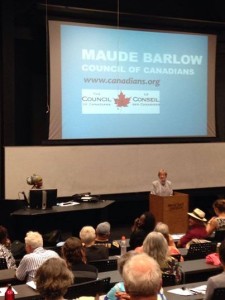July 2, 2014
FOR IMMEDIATE RELEASE
Contact: Liz Kirkwoood, Executive Director
231 944 1568 or liz@flowforwater.org
Michigan Governor Snyder urged to exercise full authority over Enbridge Pipeline No. 5 under public lands easement agreement and Great Lakes Submerged Land Act
Traverse City – 17 Conservation, water and environmental groups and the Little Traverse Bay Bands of Odawa Indians today sent a letter to Michigan Governor Rick Snyder urging greater state action to regulate Enbridge Pipeline No. 5. The 61 year-old pipeline transports nearly 23 million gallons of crude oil and other petroleum products under the Straits of Mackinac each day.
The letter points out potential violations in operations and public disclosure requirements established by Public Act 10 of 1953 and the Great Lakes Submerged Land Act. Public Act 10 granted the Michigan Department of Conservation public trust authority to allow this particular easement on public trust bottomlands and waters of the Great Lakes provided they are “held in trust.”
The letter cites the lack of disclosure and transparency by Enbridge and the failure of the State of Michigan to enforce accountability and compliance consistent with the requirements of the public trust in the waters and bottomlands of the Great Lakes.
“The lack of information leaves too many questions; it makes it impossible to truly assess the risk of a devastating crude oil spill under the Straits of Mackinac, “said Liz Kirkwood, Executive Director of FLOW and a principal author of the report. “For instance, the 1953 easement agreement sets the maximum operating pressure of pipeline No. 5 at 600 psig. Data from the federal Pipeline and Hazardous Materials Safety Administration (PHMSA), show that Enbridge’s maximum operating pressure significantly exceeds 600 psig, and instead typically runs at nearly twice the allowed pressure at about 1000-1250 psig. We have to get to the bottom of this and other crucial safety questions. ”
Enbridge had a catastrophic spill on its pipeline near the Kalamazoo River in 2010, causing severe environmental impacts and massive cleanup costs.
“We urge you, the Attorney General, and Department of Environmental Quality (DEQ) to fully assert your authority under the easement, Public Act 10 of 1953, the GLSLA, and public trust law to ensure that any use by Enbridge of Line 5 under the Straits does not, and will not likely, subordinate, interfere with, or impair these public trust waters and bottomlands or the public use and enjoyment of these waters so essential to the quality of life and economy of Michigan,” the letter states.
The groups praised the Michigan Attorney General and the Department of Environmental Quality for their joint April 29, 2014 letter to Enbridge. Recognizing that the Straits pipeline present a “unique risk” and an overwhelming magnitude of harm to the Straits, Lake Michigan-Huron, the ecosystem, and the public and private use and enjoyment that depend on them, the Attorney General and DEQ demanded that Enbridge provide critical detailed information about: pipeline construction, modification, useful life and replacement, (2) existing and potential future uses of the pipelines, (3) pipeline inspection, (4) pipeline leak prevention, detection, and control, (5) contingency planning and spill response, (6) compliance with easement terms, and (7) access to Enbridge records under the easement.
“We appreciate the recognition by the Attorney General and the DEQ of the State’s public trust or stewardship responsibilities to protect these waters, bottomlands, and public uses from potential harm and risk associated with Line 5,” said Jim Olson, founder of FLOW, a Great Lakes water policy center. “But even if Enbridge complies with the requests of the Attorney General and DEQ in this letter, it will not have fully complied with the terms of the easement, Public Act 10, the GLSLA, or public trust law that protects the integrity of the Straits and Great Lakes.”
In the April 29 letter, the Attorney General and the DEQ state, “Strong currents in the Straits could rapidly spread any oil leaked from the pipelines into both Lakes Huron and Michigan, causing grave environmental and economic harm. Efforts to contain and clean up leaks in this area would be extraordinarily difficult, especially if they occurred in winter or other severe weather conditions that commonly occur at the Straits.” These currents could rapidly move this oil spill plume throughout Lake Michigan-Huron.
“The Great Lakes supply drinking water to 42 million people,” said Howard Learner, Executive Director of the Environmental Law & Policy Center. “We can’t afford another potential Enbridge oil pipeline spill like what happened in the Kalamazoo River. Let’s work to try to prevent another costly disaster. All of the Great Lakes states have a vital stake in avoiding oil spill hazards in the Straits of Mackinac.”
The letter urges the Governor, Attorney General and DEQ to fully exercise authority under the easement, Public Act 10 of 1953, the GLSLA, and public trust law to ensure that any use by Enbridge of Line 5 under the Straits: “does not, and will not likely, subordinate, interfere with, or impair these public trust waters and bottomlands or the public use and enjoyment of these waters – so essential to the quality of life and economy of Michigan.”
The letter enumerates four necessary next steps:
- Submit the information the AG and DEQ requested in their April 29 letter and make such information available to the public;
- Disclose in detail all oil and other liquids or substances that have been, are, or will be transported through Line 5 pipelines under the Straits;
- File a conveyance application for authorization from the DEQ under the GLSLA and public trust law, coupled with a comprehensive analysis of likely impacts on water, ecosystem, and public uses in the event of a release, and demonstrate that Line 5 will conform with the State’s perpetual public trust duties and standards for occupying and using the waters and bottomlands of the Straits and Lake Michigan-Huron; and
- Achieve full compliance with all express terms and conditions of the easement.
Enbridge recently increased Line 5 pipeline product flow under the Straits by 10 percent from 490,000 to 540,000 barrels per day, or 2.1 million gallons per day. Enbridge increased Line 5’s pipeline pressure by 20 percent, depending on the viscosity of the product being pumped and transported. Enbridge has increased the transport of oil in this aging 61-year-old pipeline containing heavy oil characteristics or compounds from tar sands.
“The effects of a catastrophic spill under the Straits would devastate the tourism industry so vital to the economy of northern Michigan,“ said James Clift, Policy Director of Lansing-based Michigan Environmental. The effects of a catastrophic spill under the Straits would devastate the Straits and Mackinac Island as an international attraction, the tourism industry so vital to the economy of Michigan.”
The State of Michigan has not yet conducted a proper public trust analysis under common law, the GLSLA, Constitution or Michigan Environmental Protection Act (“MEPA”). Mandatory evaluation is required under the law to determine whether or not the occupancy and use by Enbridge of Line 5 is “likely to pollute, impair or destroy the air, water or other natural resources or the public trust in these resources,” according to Kirkwood. In other words, Enbridge must affirmatively prove that this five-mile submerged pipeline, with its recent oil and product changes and increased volume and pressure will not likely harm public trust waters, the ecosystem, and uses for fishing, commerce, navigation, recreation, and drinking supplies that depend on these waters.
“Michigan residents need to get active and make it known they demand accountability,” said Jim Lively, Michigan Land Use Institute.
Environmental and conservation advocates have long been frustrated by the lack of information available about Line 5. The letter points out that the public trust requires complete transparency, disclosure, and accountability on the part of Enbridge. The State of Michigan has unfettered authority to demand such transparency, disclosure, and accountability.
The Great Lakes hold 20 percent of the world’s fresh surface water.
A copy of the full letter is available here.
# # #
FLOW is the Great Lakes Basin’s only public trust policy and education 501(c)(3) nonprofit organization. Our mission is to advance public trust solutions to save the Great Lakes.


 I will be a senior at Michigan State University this fall. My family bleeds green and white, so I have been a Spartan since birth. I am in the James Madison College at MSU majoring in Comparative Cultures and Politics. I am also working towards a minor in Spanish and a Science, Technology, Environment, and Public Policy Specialization. Throughout my time at MSU, I have been a member of the varsity women’s soccer team.
I will be a senior at Michigan State University this fall. My family bleeds green and white, so I have been a Spartan since birth. I am in the James Madison College at MSU majoring in Comparative Cultures and Politics. I am also working towards a minor in Spanish and a Science, Technology, Environment, and Public Policy Specialization. Throughout my time at MSU, I have been a member of the varsity women’s soccer team.


